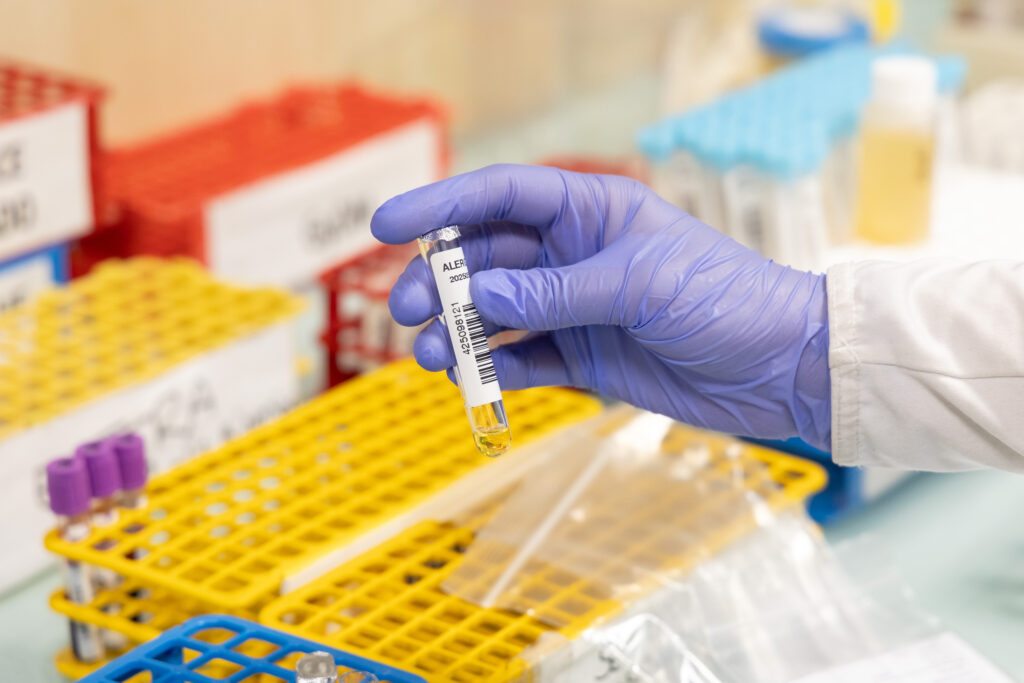Next-Generation Sequencing (NGS)
What is Next-Generation Sequencing (NGS)?
Next-Generation Sequencing (NGS), also known as high-throughput sequencing, is a set of DNA sequencing technologies that have revolutionized research and diagnosis in medicine. Unlike Sanger sequencing, which can only sequence a small amount of DNA at a time, NGS allows millions or even billions of DNA fragments to be sequenced simultaneously, drastically reducing the time and cost of sequencing.
What is this diagnostic test used for?
Next-Generation Sequencing (NGS) is used for a wide variety of purposes, including:
- Oncology:
- Identification of genetic mutations that drive cancer growth.
- Selection of targeted therapies that target specific mutations in cancer.
- Monitoring response to oncological treatment.
- Detection of drug resistance.
- Genetics:
- Diagnosis of hereditary genetic diseases.
- Identification of carriers of genetic diseases.
- Whole genome analysis.
- Microbiology:
- Identification of infectious microorganisms.
- Analysis of antibiotic resistance.
- Research:
- Study of genetic diversity.
- Discovery of new genes and mutations.
Benefits of high technology in NGS
Next-Generation Sequencing (NGS) offers a series of key benefits thanks to the technology it uses:
- High throughput: Allows for sequencing millions or even billions of DNA fragments simultaneously.
- High speed: Drastically reduces the time required for DNA sequencing.
- Low cost: Reduces the cost of DNA sequencing.
- High sensitivity: Allows for detecting rare or low-frequency mutations.
- Comprehensive analysis: Allows for analyzing multiple genes or even the entire genome in a single test.

How is the procedure performed?
The Next-Generation Sequencing (NGS) procedure generally proceeds as follows:
-
Preparation:
A DNA sample is required, which can be obtained from blood, tumor tissue, saliva, or other bodily fluids. You will be provided with specific instructions on how to collect the sample, if necessary. It is important to inform your doctor about all medications you are taking, including over-the-counter drugs and supplements.
-
During the test:
The sequencing process itself is performed in a specialized laboratory. You will not be present during this process. The laboratory will extract DNA from the sample, prepare a DNA library, perform sequencing, and analyze the data.
-
After the test:
Once the analysis is complete, your doctor will receive a report with the results. Your doctor will discuss the results with you and explain the implications for your health and treatment.
Recommendations for the test
Remember that it is important to follow these recommendations to ensure the quality of the study and your comfort:
- Follow sample collection instructions: Carefully follow the instructions provided by your doctor or laboratory staff for sample collection.
- Inform about medications: It is important to tell your doctor about all medications you are taking, including over-the-counter drugs and supplements.
Are there any risks?
Next-Generation Sequencing (NGS) itself has no direct risks for patients, as it only requires a DNA sample. However, the test results can have significant implications for patients and their families, so it is important to discuss the possible results and their implications with a doctor.
For your test to proceed smoothly, we ask that you arrive in advance of your scheduled time. This will allow us to complete the necessary administrative and clinical preparation.
Before the test, we will provide you with the Informed Consent form, a document with important information that you must read and sign.
If your appointment is for a Magnetic Resonance Imaging (MRI), it is crucial that you inform us about the presence of pacemakers, metallic objects, prostheses (including dental), tattoos, or medication infusion devices, such as insulin pumps.
These diagnostic tests are very safe, but as with any medical procedure, there is a minimal possibility of incidence.